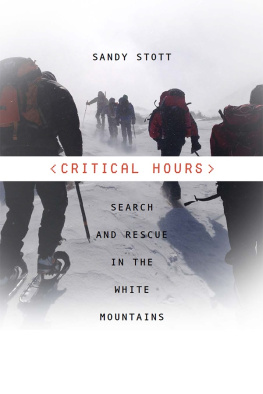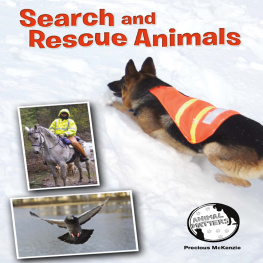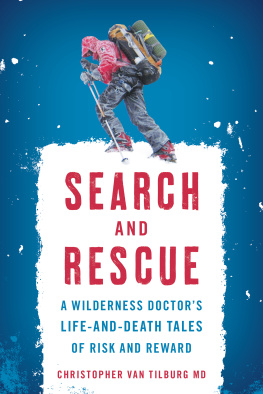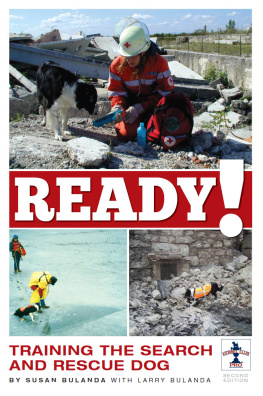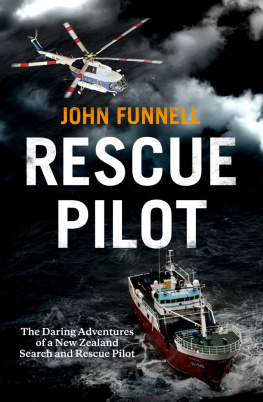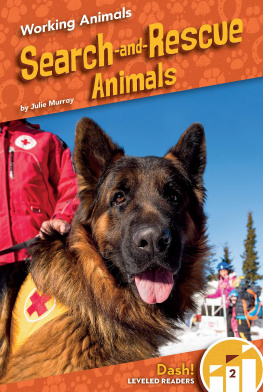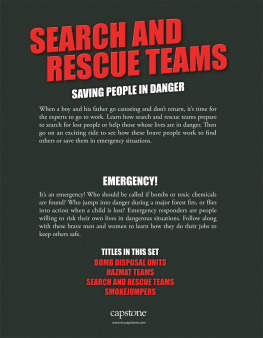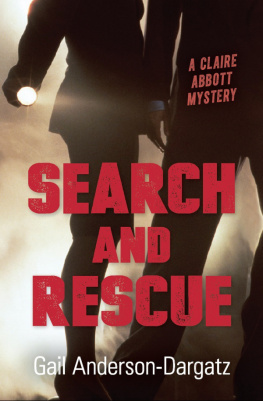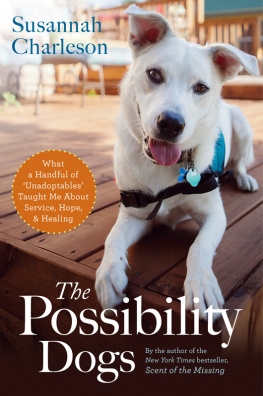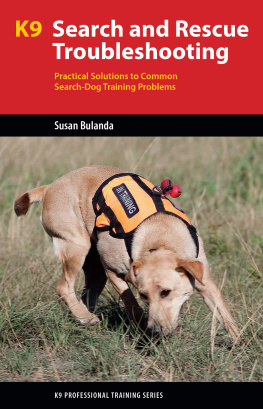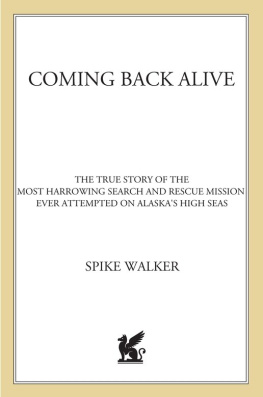Sandy Stott - Critical Hours: Search and Rescue in the White Mountains
Here you can read online Sandy Stott - Critical Hours: Search and Rescue in the White Mountains full text of the book (entire story) in english for free. Download pdf and epub, get meaning, cover and reviews about this ebook. year: 2018, publisher: University Press of New England, genre: Home and family. Description of the work, (preface) as well as reviews are available. Best literature library LitArk.com created for fans of good reading and offers a wide selection of genres:
Romance novel
Science fiction
Adventure
Detective
Science
History
Home and family
Prose
Art
Politics
Computer
Non-fiction
Religion
Business
Children
Humor
Choose a favorite category and find really read worthwhile books. Enjoy immersion in the world of imagination, feel the emotions of the characters or learn something new for yourself, make an fascinating discovery.
- Book:Critical Hours: Search and Rescue in the White Mountains
- Author:
- Publisher:University Press of New England
- Genre:
- Year:2018
- Rating:4 / 5
- Favourites:Add to favourites
- Your mark:
- 80
- 1
- 2
- 3
- 4
- 5
Critical Hours: Search and Rescue in the White Mountains: summary, description and annotation
We offer to read an annotation, description, summary or preface (depends on what the author of the book "Critical Hours: Search and Rescue in the White Mountains" wrote himself). If you haven't found the necessary information about the book — write in the comments, we will try to find it.
A perilous history of search and rescue in a changing landscape
Sandy Stott: author's other books
Who wrote Critical Hours: Search and Rescue in the White Mountains? Find out the surname, the name of the author of the book and a list of all author's works by series.
Critical Hours: Search and Rescue in the White Mountains — read online for free the complete book (whole text) full work
Below is the text of the book, divided by pages. System saving the place of the last page read, allows you to conveniently read the book "Critical Hours: Search and Rescue in the White Mountains" online for free, without having to search again every time where you left off. Put a bookmark, and you can go to the page where you finished reading at any time.
Font size:
Interval:
Bookmark:

ABBREVIATIONS
This book is full of abbreviations that avoid the need to spell out the lengthy names of search and rescue teams and other organizations. For the readers convenience, here is a list of groups that appear often and their abbreviations.
AMC Appalachian Mountain Club
AVSAR Androscoggin Valley Search and Rescue
CO New Hampshire Fish and Game conservation officer
DHART Dartmouth-Hitchcock Advanced Rescue Team
MRS Mountain Rescue Service
NEK9 New England K9 Search and Rescue
NHANG New Hampshire Army National Guard
NHFG New Hampshire Fish and Game
NHOC New Hampshire Outdoor Council
PVSART Pemigewasset Valley Search and Rescue Team
RMC Randolph Mountain Club
SOLO Stonehearth Outdoor Learning Opportunities
USFS United States Forest Service
UVWRT Upper Valley Wilderness Rescue Team
WMSRT White Mountain Swiftwater Rescue Team
ACKNOWLEDGMENTS
Because this is a nonfiction book, it is built on the stories of the past. I am grateful to the storytellers who have published accounts of those stories. Without them, there would be no foundation for my work, nor would there be a perch from which to survey the current scene and wonder about its future. Books central to my understanding of how White Mountain search and rescue developed are Forest and Crag, by Laura and Guy Waterman; Not without Peril, by Nick Howe; Joe Dodge: One New Hampshire Institution, by William Lowell Putnam; and Mountain Voices, by Doug Mayer and Rebecca Oreskes. These volumes gave me the sense of White Mountain history and its inflection points that allowed me to choose stories that carried within them the evolution of search and rescue and its modern structure and practices. I also drew heavily on the accumulated history in Appalachia, the AMCs semiannual journal. Appalachia offers a record going back to 1877, and in such incidents as that of Curtis and Ormsbee, it provided extensive description and commentary.
Other works and writers that brought me memorable stories and excellent questions are listed in the bibliography.
Just as they provide an extraordinary service to adventurers in the White Mountains, so too were searchers, rescuers, and those they sought generous with their time and stories when I spoke with them. In particular, interviews with these participants in our searches and rescues were invaluable: Bill and Barbara Arnold, Matt Bowman, Alain Comeau, Brad Ray, Rebecca Orsekes, Chris Joosen, Paul Cormier, Steve Larson, James Wrigley, Paul Cunha, Mike Pelchat, Paul Neubauer, Rick Wilcox, Allan Clark, Steve Smith, Steve Dupuis, Justin Preisendorfer, Kevin Jordan, Heidi Murphy, Wayne Saunders, Mark Ober, Jim Kneeland, Crispin Battles, Iain Hamilton, Dan Jacques, Greg Gerbig, Kyle Madigan, Adam DeWolfe, Greg Reck, Lelia Vann, Julie Horgan, Pat Grimm.
Writers work with words and have a fondness for them. Images sometimes present more of an unknown. I was fortunate to have people who gave me good advice and excellent images for illustration. Thanks to the photographers credited, and to AMC archivist Becky Fullerton and to Ty Gagne, both of whom helped me find images that supported the stories of the book.
I talk often about risk with two friends who work at managing risk for a living. Geoff Smith and Ty Gagne both offered keen insights and questions, and each showed the sort of interest that keeps a writer going. Other friends joined in conversation over e-mail, and those conversations brought paragraphs and pages to this bookthanks to Patty Hager, Chris Woodside, and Sally Manikian. Thanks also to people in the Cardigan writing group, who asked questions when we gathered in October 2016, and so let me know that others might be interested.
In the midst of all this thinking and writing, a visit with the croo of AMCs Galehead Hut gave me insight into the present and hope for the future. Thanks to Scott Berkley, Erica Lehner, Anna Ready-Campbell, Annie Schide, and Greg Konar.
Around three-quarters of the way into this book, I got the gift of two first readers: David Dunbar and Scott Berkley sent back observations that improved the work and encouraged me.
A special thanks to Doug Mayer, who not only put up with my constant questions, but also put me up at his Randolph home on many occasions. Doug also gave me good insight into the rescue scene in Chamonix, France, where he works and lives part of the year.
I am also grateful to University Press of New England for supporting this project: to my acquiring editor, Richard Pult, for believing in it throughout, to Susan Abel for managing the whole march to production, and to copy- editor Cannon Labrie for his close and careful work with my words. Such clear-eyed readers are the rarest of gifts.
Any errors in these pages are mine and mine alone.
I am lucky to have a partner who joins and encourages me on various trails, and who is a most sure-footed guide along the sentence-trails of my writing. First companion and first editor, without Lucille there would be no book.
< APPENDIX A >
THE HIKESAFE PROGRAM
The best rescue is, of course, the one not needed. Self-sufficiency and self-reliance are prized highly in the mountains, but, as these two appendixes make clear, both qualities begin in the resolve and preparation of the mountain wanderer. New Hampshire Fish and Game has joined the U.S. Forest Service in creating and promoting the hikeSafe Program, which has become highly visible throughout the White Mountains. Their educational hikeSafe cards listing hikings ten essentials and other useful advice are distributed in outlets throughout the mountains.
Note: The hikeSafe card differs from the Hike Safe card described in chapter 19. That card may be purchased for a voluntary contribution that helps defray SAR costs and exempts its holder from charges should he or she need rescue, as long as that rescue is not precipitated by negligence.
< APPENDIX B >
PACK LIKE A RESCUER
Want to pack like a rescuer, perhaps in service of guarding against needing him or her? Many SAR group members have ready-packs so that, when the call comes, they need simply to open the closet, grab the pack, and gowith no rooting about for those gloves or that jacket. Or that headlamp. Such a pack is fuller than Hike Safes one because this packs carrier anticipates going to the aid of another.
Heres what the National Association of Search and Rescue (NASAR) says a rescuers pack needs to contain. The list that follows also contains explanation of the need for many of the items to be packed. In this way, the list offers another lens into the thinking of a rescuer.
Section 1: NASAR Consolidated Pack Guide
NASAR recognizes that SAR responders operate in extremely varied environments. In consideration of local environments, legislation, circumstances, or team standards, NASAR has compiled this Consolidated Pack Guide. This guide is the single publication that documents all NASAR program pack recommendations, and it supersedes all previous pack standards and guidance.
The SAR 24-hour pack is designed to prepare a sole searcher on a field assignment for up to 24 hours with no outside logistical or re-supply assistance. The searcher is expected to wear or carry (layers) clothes/uniform appropriate for the response environment, circumstances, duration and task. It is also expected that the searcher will have the supplies necessary to assist and support an injured victim (or injured searcher) for a portion of the 24-hour assignment.
The recommended equipment falls into several required core capabilities a searcher must be able to perform:
Next pageFont size:
Interval:
Bookmark:
Similar books «Critical Hours: Search and Rescue in the White Mountains»
Look at similar books to Critical Hours: Search and Rescue in the White Mountains. We have selected literature similar in name and meaning in the hope of providing readers with more options to find new, interesting, not yet read works.
Discussion, reviews of the book Critical Hours: Search and Rescue in the White Mountains and just readers' own opinions. Leave your comments, write what you think about the work, its meaning or the main characters. Specify what exactly you liked and what you didn't like, and why you think so.

